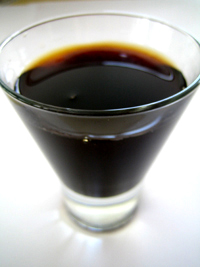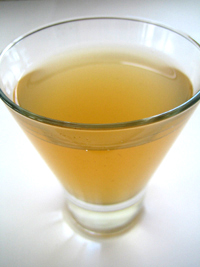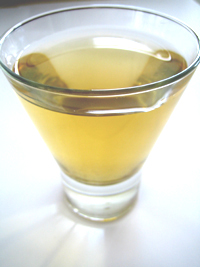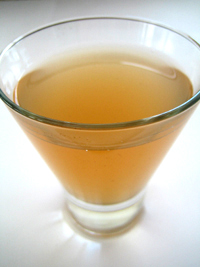All Vinegar TypesPage 3: Vinegar Glossary ~ Vinegar Types A To CThis is page 3 of a five-page article; here, vinegar types from A to C. Click on the black links below to visit other pages. |
||
APPLE CIDER VINEGAR See Cider Vinegar, below. |
||
BALSAMIC VINEGAR The tradition of balsamic vinegar-making in Modena, Italy has not changed in 600 years. Trebbiano grapes are boiled down to a near-syrup and go through multiple fermentations and lengthy maturation periods. The finest, which must be judged and given a seal of approval, are called tradizionale. The oldest tradizionale, exquisitely complex, syrup-like and so rare that they are doled out with medicine droppers, can be 80 or 100 years old or older and cost hundreds of dollars for an ounce. A basic tradizionale aged 12 to 20 years is $125 and higher for 100 milliliters; an extravecchio aged more than 25 years is $175 and higher. A 40 year old can be $500. It is so fine, a perfect combination of sweet and sour, that it is drunk like a wine as a digestif. Such vinegar is also used in droplets to complement Parmesan cheese, ice cream, breasts of duck, and other prepared plates. An authentic tradizionale will bear the red seal of the Consorzio Tra Produttori Dell’Aceto Balsamico Tradizionale di Modena. |
 Balsamic vinegar. Vinegar photography by Melody Lan | THE NIBBLE. Caveat emptor: the majority of balsamic vinegar sold is imitation, benefiting from the enormous growth in popularity and the price of real balsamic. An estimated two-thirds of the vinegar labeled “balsamic” is just generic red wine vinegar flavored with sugar, caramel, vanilla, and other flavorings and colorings to emulate balsamic. Read the label. If it doesn’t state grape must or balsamic, it isn’t the real thing. If you’ve tasted the real deal, even the commercial product, it will be evident. Read our separate article with a full explanation of balsamic vinegar. |
|
CANE VINEGAR & COCONUT VINEGAR These two vinegars, unfamiliar to most people, are becoming more prominent with the growing interest in Pacific Rim foods.
|
 Coconut vinegar. |
|
CHAMPAGNE VINEGAR Made from the grapes of the Champagne region of France (the grapes are Chardonnay and/or Pinot Noir), Champagne vinegar is considerably more expensive than regular white wine vinegar. It is also is far more refined in taste, and should be used in delicate preparations, such as white sauces, fine salad dressings or mignonette sauce for oysters, where the flavor of the vinegar can shine through. |
 Champagne vinegar. |
|
CIDER VINEGAR Substituting malt with apple cider, or more often these days with apple mash*, results in honey-colored cider vinegar. Some discriminating noses can actually taste or sense hints of apple in higher quality cider vinegars. The product, which is often used to pickle fruit, usually is filtered. However, unfiltered vinegar is made from unfiltered organic cider. If you believe that drinking vinegar is good for your health, this is your product. It is a popular choice for dressings for fruit and vegetable salads, marinades, and for making chutneys. |
 Cider Vinegar |
|
COCONUT VINEGARSee Cane Vinegar, above. Continue To Page 4: Types Of Vinegar ~ D To P |
||
Last Updated May 2021
© Copyright 2005-2025 Lifestyle Direct, Inc. All rights reserved. All images are copyrighted to their respective owners.